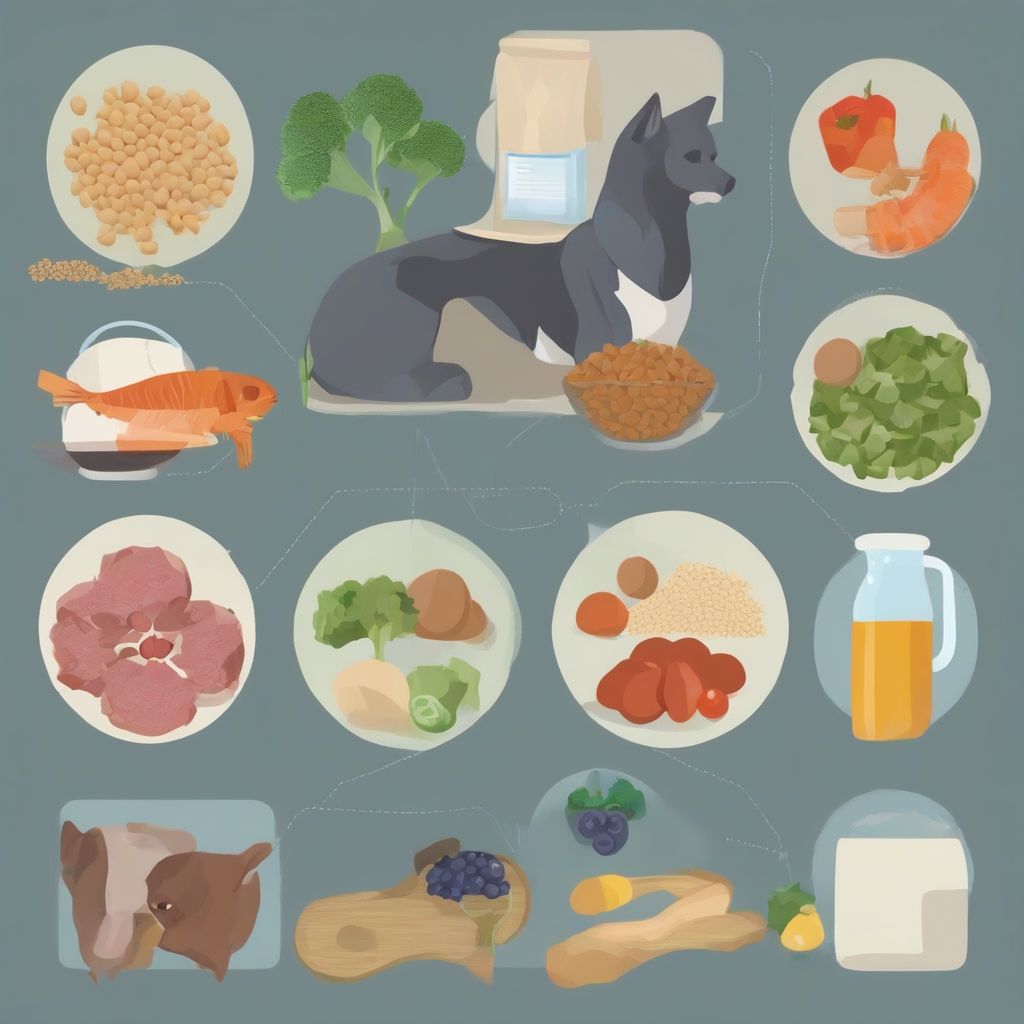“A healthy outside starts from the inside,” as the saying goes. We all want what’s best for our furry family members, and their nutrition plays a crucial role in their overall well-being. However, navigating the world of pet food and nutrition can feel like navigating a maze of conflicting information. From old wives’ tales passed down through generations to marketing tactics designed to sell products, pet nutrition myths abound. In this article, we’ll debunk some of the most common misconceptions surrounding pet nutrition and equip you with the knowledge to make informed decisions for your beloved companion.
Myth 1: Homemade Food is Always Better Than Commercial Pet Food
While the idea of preparing fresh, homemade meals for your pet might seem appealing, it’s not as simple as it sounds. Commercial pet foods are formulated to meet the specific nutritional requirements for different life stages (puppy/kitten, adult, senior) and may be tailored for specific health conditions.
Here’s the truth: Creating balanced homemade pet food requires careful planning and an understanding of your pet’s nutritional needs. Simply throwing together some meat and vegetables might not provide all the essential nutrients in the right proportions.
Expert Insight: Dr. Sarah Williams, a veterinary nutritionist, cautions, “Homemade diets can be healthy and appropriate for some pets, but they must be formulated by a qualified professional to avoid nutritional deficiencies or excesses.”
What to do instead:
- If you’re considering homemade food, consult with your veterinarian or a board-certified veterinary nutritionist.
- They can help you create a balanced recipe or recommend commercially available pre-mixes to add to homemade meals.
Myth 2: Dogs and Cats Can Thrive on a Vegan Diet
Cats, being obligate carnivores, are biologically designed to obtain essential nutrients primarily from animal sources. Dogs are omnivores, meaning they can digest and utilize nutrients from both plant and animal sources.
Here’s the truth: While dogs can adapt to a well-planned vegan diet, cats cannot. Taurine, an amino acid crucial for heart health, vision, and reproduction, is found primarily in animal tissues. Cats cannot synthesize enough taurine on their own and require it in their diet.
Expert Opinion: “Feeding a cat a vegan diet can lead to serious health issues, including heart disease, blindness, and even death,” warns Dr. Jane Miller, a veterinarian with over 20 years of experience.
What to do instead:
- Choose commercially available cat and dog foods that are formulated to meet their specific dietary needs.
- Look for the Association of American Feed Control Officials (AAFCO) statement on the packaging, indicating that the food has met the nutritional standards for the intended life stage.
Myth 3: Raw Food Diets are More Natural and Healthier
The popularity of raw food diets for pets has been on the rise, fueled by claims that they mimic a more “natural” ancestral diet.
Here’s the truth: While it’s true that wild ancestors consumed raw food, it’s crucial to recognize that our domesticated pets have different digestive systems and nutritional needs.
Here’s why raw food diets can be risky:
- Bacterial Contamination: Raw meat, poultry, and eggs can harbor harmful bacteria like Salmonella and E. coli, posing a health risk to both pets and humans in the household.
- Nutritional Imbalances: Formulating a balanced raw food diet requires careful consideration of calcium, phosphorus, and other essential nutrients.
- Bones: Raw bones can splinter and cause choking hazards or internal injuries.
What to do instead:
- If you’re considering a raw food diet for your pet, have a thorough discussion with your veterinarian.
- They can help you weigh the risks and benefits and provide guidance on safe handling and preparation.
Myth 4: Grains are Bad for Pets and Cause Allergies
The rise of grain-free pet foods has led many pet owners to believe that grains are inherently unhealthy for their companions.
Here’s the truth: Grains, like rice, oats, and barley, can be valuable sources of carbohydrates, fiber, and essential nutrients in pet food.
Expert Explanation: “True grain allergies in pets are relatively uncommon,” explains Dr. Mark Wilson, a veterinary dermatologist. “While some pets may have sensitivities to certain grains, these are often less common than allergies to other ingredients, such as beef, dairy, or chicken.”
What to do instead:
- If you suspect your pet has a food allergy, consult with your veterinarian.
- They can perform tests to identify the specific allergen and recommend an appropriate diet.
Myth 5: A Little Bit of “People Food” Won’t Hurt
We’ve all been tempted to slip our furry friends a tasty morsel from our plates, but it’s crucial to be mindful of what’s safe and what’s not.
Here’s the truth: Many human foods can be toxic to pets.
Foods to Avoid:
- Chocolate: Contains theobromine, a compound toxic to dogs and cats.
- Grapes and Raisins: Can cause kidney failure in dogs.
- Onions and Garlic: Can damage red blood cells and lead to anemia.
- Xylitol (artificial sweetener): Can cause a rapid release of insulin, leading to life-threatening hypoglycemia (low blood sugar) in dogs.
What to do instead:
- Offer your pet healthy treats specifically designed for them.
- If you’re unsure about a particular food, it’s always best to err on the side of caution and consult with your veterinarian.
 Pet Nutrition Myths
Pet Nutrition Myths
[amazon bestseller=”dog food”]
Navigating Pet Nutrition with Confidence
As loving pet owners, we want to provide our furry companions with the best possible care, and that includes nourishing them with a balanced and species-appropriate diet. By debunking these common pet nutrition myths, we can make informed decisions that support their long-term health and happiness. Remember, your veterinarian is your trusted ally in pet care. Consult with them to determine the best dietary approach for your furry friend based on their individual needs, breed, age, and lifestyle.
